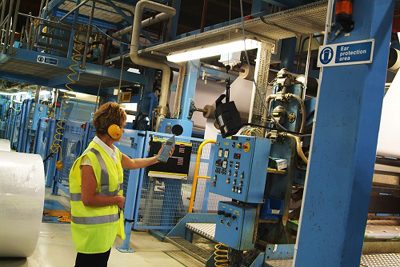Common Mistakes To Avoid When Buying A New Sound Level Meter
Whether you run or own a construction site, a metal cutting workshop or an open cast mine, as an employer of a noisy working environment, you must ensure that the hearing your employees is protected

In the UK, The Control of Noise Regulations 2005 requires employers to reduce or prevent risks to health and safety from excessive exposure to noise at work. If employers don’t take the necessary action to protect workers’ hearing, they can be liable and could be taken to court. The UK is not alone as similar demands and expectations are put on employers around the world.
One way to help protect the hearing of workers is by monitoring the levels of noise they are exposed to. An effective method to do this is by using a sound level meter.
However, like most products, sound level meters can vary significantly in terms of efficiency, accuracy and cost. Some companies can make the mistake of buying low cost meters that provide ‘quick fix’ solutions. The problem being that such meters do not always provide accurate readings. Failing to produce precise noise level readings can result in companies not providing workers with the right hearing protection which could lead to noise-induced hearing loss.
Take a look at the following mistakes companies can make when choosing a sound level meter:
Mistake number one – Opting for the incorrect class of instrument
The class of a sound level meter represents its frequency range and accuracy. Whilst Class 2 sound level meters are generally considered to be sufficient for measuring general noise within an occupational setting, Class 1 models must be used in law enforcement and research and environmental applications. Class 1 instruments typically measure a wider frequency range of noise. They also uphold a tighter tolerance than Class 2 models.
The problem is that when it comes to choosing a new sound level meter, some companies don’t realise that such a meter needs to be classified. In their ignorance, companies opt for non-classified meters or ones that are neither Class 1 nor Class 2, leaving them vulnerable to potential claims. It is also not uncommon for companies to panic and buy a Class 1 sound level meter. In reality most standards, whether in the UK or around the world, only stipulate the use of a Class 2 meter, resulting in companies spending more money than necessary.
To ensure that you don’t make that mistake and you use a sound level meter that complies with current regulations, read Part 2 and Part 3 of IEC 61672 – the standard for sound level meters.
Mistake number 2 – Buying from a less-established manufacturer
Failing to buy a sound level meter from a reputable, well-established manufacturer may save you money in the short-term but it could cost you more in the long-run. Buying a sound level meter from a trustworthy and long-standing manufacturer will give you the reassurance that your meter will not only withstand the test of time but will be compliant with the criteria health and safety professionals require.
Mistake number 3 – Opting for a cheaper model
It might be tempting to spend just £50 on a sound level meter or, even more appealing, downloading an app onto your iPhone that claims to measure sound. Less expensive noise monitoring devices haven’t typically undergone the testing that is required by noise legislation. Consequently, these cheaper models are likely to measure levels of noise less accurately than a device that might cost more but has been designed and undergone stringent testing a reputable manufacturer.
An inaccurate reading of as little as 3 decibels can expose employees up to four times the legalised levels of noise. For example, someone exposed over many years to a level of 86dB(A) for 8 hours has four times as much risk of suffering noise-induced hearing loss as a colleague working at 80dB(A). This seemingly small error could end up costing your company a lot more money, its reputation and its future if a claim was made against it. It is worth noting that claims, if successful, typically average between £3,000 and £5,000.
CONTACT
Pascale O'Rourke
Pulsar Instruments Plc
pascale.orourke@pulsarinstruments.com
www.pulsarinstruments.com
+44 (0) 1723 518011
Tuesday 22 July 2014 / file under Safety | Environmental | Engineering


